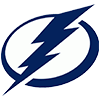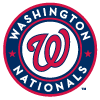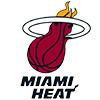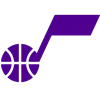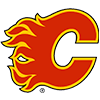J.K. Dobbins and Aaron Rodgers
The Ravens running back suffered another significant injury, tearing his Achilles tendon in a win over the Texans. Two years ago, Dobbins suffered a torn anterior cruciate ligament (ACL) in his left knee and now will see another season end prematurely. Dobbins worked diligently to return from the knee injury but faces a tougher road with the Achilles injury. The return to play (RTP) rate for running backs coming off an ACL tear is somewhere between 65 and 80 percent. Unfortunately, the RTP rate for a torn Achilles is smaller, with one 2021 study recording it as 40 percent for NFL running backs. Furthermore, the same studies revealed a decrease in productivity among those players who did manage to return to the field. Dobbins is done for the year and will enter free agency with a degree of uncertainty. The Ravens have said they will stay in house for Dobbins' replacement, elevating Melvin Gordon from the practice squad. Gordon joins Justice Hill and Gus Edwards in the Ravens backfield. Hill received the bulk of the carries in the red zone and finished Week 1 with two touchdowns. However, Edwards will likely be the team's "feature" back for the immediate future.
The injury occurred again on Monday night when Rodgers went down on his fourth play as the Jets quarterback. Replays show Rodgers' left calf recoiling when the tendon ruptured, and reports later confirmed he was dealing with an Achilles injury. An MRI on
J.K. Dobbins and Aaron Rodgers
The Ravens running back suffered another significant injury, tearing his Achilles tendon in a win over the Texans. Two years ago, Dobbins suffered a torn anterior cruciate ligament (ACL) in his left knee and now will see another season end prematurely. Dobbins worked diligently to return from the knee injury but faces a tougher road with the Achilles injury. The return to play (RTP) rate for running backs coming off an ACL tear is somewhere between 65 and 80 percent. Unfortunately, the RTP rate for a torn Achilles is smaller, with one 2021 study recording it as 40 percent for NFL running backs. Furthermore, the same studies revealed a decrease in productivity among those players who did manage to return to the field. Dobbins is done for the year and will enter free agency with a degree of uncertainty. The Ravens have said they will stay in house for Dobbins' replacement, elevating Melvin Gordon from the practice squad. Gordon joins Justice Hill and Gus Edwards in the Ravens backfield. Hill received the bulk of the carries in the red zone and finished Week 1 with two touchdowns. However, Edwards will likely be the team's "feature" back for the immediate future.
The injury occurred again on Monday night when Rodgers went down on his fourth play as the Jets quarterback. Replays show Rodgers' left calf recoiling when the tendon ruptured, and reports later confirmed he was dealing with an Achilles injury. An MRI on the area confirmed the complete tear, though the imaging was procedural and only needed to confirm the team's suspicions.
Medical professionals often utilize a special test known as the Thompson test when an Achilles injury is suspected. The test involves squeezing the calf and looking for movement in the foot. The test is reliable though imaging is often still utilized to verify the findings.
Rodgers will face different hurdles than Dobbins, as his position has far fewer demands than a running back. Research on the RTP rate for quarterbacks is limited since the injury occurs far less frequently to the position than it does in running backs or wide receivers. Former Jets quarterback Vinny Testaverde is the most notable QB to tear his Achilles, suffering the injury, oddly enough, in Week 1 of the 1999 season. Testaverde was back for Week 1 in 2000 and played nine more seasons following his injury. Testaverde was a tad younger (35) than Rodgers (39) when his injury occurred, but there is still little reason to think Rodgers will be unable to continue his career, if he elects to go that route. The Jets will hand the reigns of the offense back to Zach Wilson who finished Monday's game 14-of-21 for 140 passing yards, one touchdown and one interception.
The Packers running back was one of the big winners in Week 1, finishing the day with 127 total yards and two touchdowns. Unfortunately, he came up limping after finishing off his second TD and was removed from the game. Jones later stated he felt like he could have returned to the game, but the decision to take him out of the contest was made as a precautionary measure.
On Monday, coach Matt LaFleur seemingly confirmed that the move was strategic, stating it was a good sign Jones was able to jog off the field and that team had the luxury of not having to force the issue. He also mentioned Jones was still being evaluated. It is likely Jones is nursing a low-grade strain, though a decision about his Week 2 availability remains in flux. The team could take the conservative approach and hold him out for at least one game, giving him extra time to recuperate and reduce the chances of a recurrence. Consider him day-to-day for now. AJ Dillon will become Green Bay's top running back if Jones misses time.
The Kansas City tight end did not play in Week 1 after hyperextending his knee in practice. Medical imaging showed all major structures intact, and Kelce was ultimately diagnosed with a bone bruise in the knee. While the term bone bruise sounds elementary, these injuries are more problematic than a simple soft tissue bruise. Bone bruises occur when bone tissue has been damaged. Like it does with a complete fracture, the body's natural healing response must create new bone tissue to fill in the gaps created at the site of the bone bruise. On the plus side, the newly formed bone tissue will eventually return the bone to its original strength. However, this does take time to complete, and a player can be sidelined for a surprisingly lengthy amount of time. Bone bruises at the knee can be particularly stubborn as the normal biomechanics of the knee can delay the process. The Chiefs appear optimistic about a Week 2 return, though I would advise those invested in Kelce to have a reliable insurance policy available.
The Raiders wideout saw his Las Vegas debut shortened by a head injury. Meyers was struck in the head by an elbow from Denver safety Kareem Jackson. Immediately after the contact, you could see Meyers' left arm become rigid in what appears to be the fencing response. The fencing response, frequently seen in boxing, is a type of abnormal posturing and is a neurological motor response following a head injury. It was confirmed Monday that Meyers has been placed in the concussion protocol. He will begin the gradual return to play protocol as soon as he is asymptomatic. Unfortunately, the issue is a big more complicated as the receiver does have a history of concussions. The effects of concussions are cumulative, meaning Meyers is more likely to experience worse symptoms and for a longer period. It's not impossible for Meyers to complete the protocol in time for Week 2, but it seems unlikely at this point.
Turf Burns
Mark Andrews: Andrews missed Week 1 with a quadriceps injury but is making progress and could return for Week 2. The Baltimore tight end suffered the injury in the final days of preseason and missed six straight practices before being limited for most of last week. The team said they will monitor his status throughout this week's practices before making a final decision. Look out for the weekly injury report to get a better idea if Andrews will play. Isaiah Likely would get his second straight start should Andrews sit again.
Austin Ekeler: The Chargers running back is nursing an undisclosed ankle injury, and his status for this week's practice remains undetermined. It's hard to estimate the severity of the injury without more specifics, so consider him day-to-day for now. Joshua Kelley would start should Ekeler be forced to the sidelines.
Diontae Johnson: Johnson joined the list of players to sustain hamstring injuries, limping off the field in Week 1. The severity of Johnson's strain has not been made public, though early reports state he will miss multiple weeks. Johnson will also be at an increased risk for recurrence, particularly within the first two weeks after he returns to action. Allen Robinson will be the wideout most likely to benefit from Johnson missing time.
Cooper Kupp: The Rams placed Kupp on the injured reserve after he aggravated his training camp hamstring strain. The decision to place him on the IR is a smart one, as it establishes a minimum amount of time lost, which should reduce the chances of him returning prematurely. Those invested in Kupp should look for him to return to action in Week 5, barring another setback.










